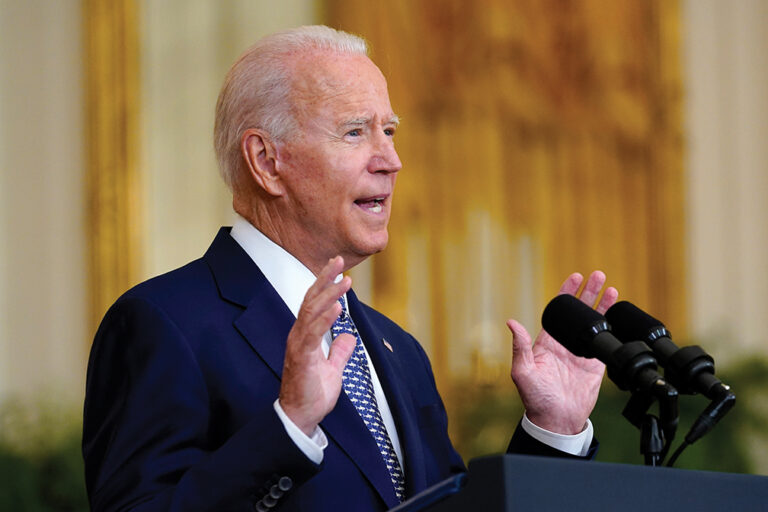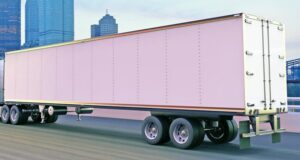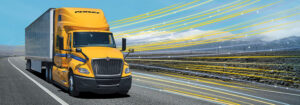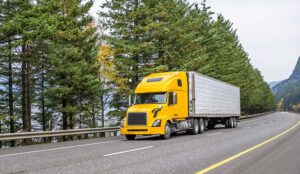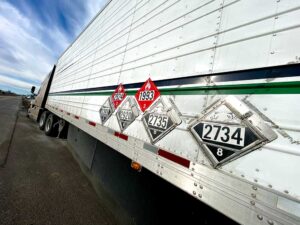When the U.S. Environmental Protection Agency (EPA) was founded in 1970 to consolidate government response to environmental problems, including the unhealthy smog that enveloped many metropolitan areas, the goal was to reduce pollutants, in line with available technologies.
Photographs of cities, partially hidden under clouds of noxious gases produced by industry and a growing number of passenger vehicles, were common in magazines and newspapers. Just a year earlier, in 1969, a major offshore oil spill near Santa Barbara, California, and the spectacle of the Cuyahoga River burning in downtown Cleveland had focused national attention on the problem of pollution.
The Clean Air Act of 1970 authorized the setting of national air-quality standards and guidelines for lowering vehicle emissions. The Clean Water Act provided similar guidance for water pollution.
Politically, while Democrats typically get the credit — or the blame — for most “green” initiatives, both the Clean Air Act and the legislation forming the EPA were proposed and then signed into law by Republican President Richard M. Nixon. Politicians have argued over the severity of standards and the timelines of imposing them ever since.
As technology advanced, so did environmental goals. When it comes to vehicle emissions, the focus is shifting from the “reduction” of pollutants to the “elimination” of them.
One method for reaching the goal of pollutant “elimination” is outlined in Executive Order 14037, issued by President Joe Biden on Aug. 5, 2021. In it, Biden states, “America must lead the world on clean and efficient cars and trucks.” To do so, Biden directed that 50% of new passenger cars and light trucks sold in 2030 be zero-emissions vehicles. He directed the EPA to develop new pollutant emissions standards for the years 2027 to 2030, after current standards expire. At the same time, he directed the Department of Transportation (DOT) to develop new fuel economy standards for cars and light trucks for the same time span.


The EPA was also directed to issue new standards for nitrogen oxide (NOx) emissions for heavy-duty vehicles, to cover the same years. The president clearly stated that the goals and objectives of the California Air Resources Board (CARB) should be adopted by the EPA.
In a Sept. 23, 2020, executive order, California Gov. Gavin Newsom directed the California Air Resources Board (CARB) to adopt the goal of 100% sales of zero-emission cars and trucks by 2035. Medium- and heavy-duty trucks sold in the state must be zero-emission by 2045, except for those used in drayage operations, which must meet the 2035 deadline.
Those are the goals, among others, that Biden wants the EPA to adopt nationwide. Other technologies are in development, but the clear front-runner for achieving those goals is electric power.
That could be a problem, according to Kathryn Pobre, manager of government affairs for the Truckload Carriers Association (TCA).
“TCA is troubled by the trend of California-specific regulations becoming national standards,” she told The Trucker. “Right now, convenient and affordable charging and refueling options to make a nationwide mandate of this standard feasible simply do not exist.”
Among the companies working to improve the availability of charging solutions is Los Angeles-based Xos Trucks. Xos, formerly Thor Trucks, toured the country in 2017 with its all-electric “ET-One” tractor and trailer. At the time, the company was considered to be in competition with Tesla for the development of an electric truck.
Thor Trucks changed its name to Xos (pronounced Ex-ose) in 2019 to settle a trademark action. The company’s focus has changed somewhat as well. Electric tractors are still in the works, but Xos also markets medium-duty delivery vehicles, charging solutions and even software.
“When you’re charging a single EV (electric vehicle) at your home, you’re not doing much of a power upgrade,” explained Xos co-founder and CEO Dakota Semler. “You’re utilizing your existing electric panel, whether it’s a 100 amp, 200 amp or 400 amp panel for a larger home, and you’re able to charge one to two vehicles on a slow charge overnight.”
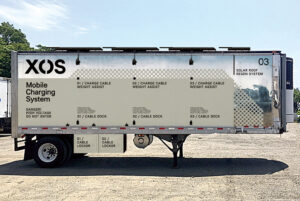

In late August, EVWatts Inc., a California-based startup company, announced plans to build the state’s first electric truck stop in Bakersfield, California.
While the current electrical grid may suffice for commuters who charge their vehicles at home, it’s different for trucking.
“When you look at fleets, there’s a larger concentration, and the average battery size is much larger,” Semler continued. “So instead of 10 households on a street with 10 EVs, it’s now one single customer location that might have 50 trucks that are each three times the size of a passenger car battery. So, it’s the equivalent of 150 cars within a single meter.”
Charging stations large enough to handle that kind of ability will require changes to the grid. Xos has developed a solution. The “Xos Hub” is a trailer that can charge up to five vehicles simultaneously from onboard batteries, recharging itself during cheaper, off-peak hours using power from the local electric grid. Roof-mounted solar panels also provide power.
“You’re not pulling a significant amount of power at any one period of time, like you would with unmanaged conventional chargers,” Semler said. “And so, we’re able to use existing infrastructure at any industrial or commercial warehouse.”
While local charging may be an answer for some fleets, it’s not yet ready for prime time, so to speak, according to Dale Decker, executive vice president for Decker Truck Lines.
“We like the cutting edge, not the bleeding edge,” he remarked. “So, we’re kind of taking input from the direction of the OEMs. We’ve tried a few things here and there.”
Decker acknowledges that progress has been made, however.
“The electric thing seems to be happening faster than I would have anticipated five or 10 years ago on the consumer car side of things,” he said. As for trucking, he said, “I don’t see an offering out there right now that fits what we would need, but we’re definitely open to it.”
Fit is an issue for Harman Cheema, too. As CEO of Sumner, Washington-based Cheema Freightlines, he’s familiar with CARB requirements.
“We’ve been usually ahead of the curve with emissions requirements,” Cheema said. “We’re talking to Freightliner about electric trucks and where they might fit. Right now, we’re looking at them for some of our local runs.”
Like many carriers, Cheema is concerned about the charging infrastructure for big rigs.
“It will be difficult to fit (EVs) in until the infrastructure is in place for charging them,” he said.
Like Xos, Trucklabs is a California-based company that might benefit from tightened environmental standards. The company markets TruckWings, a cab-mounted device that deploys at highway speed to close the gap between tractor and trailer, decreasing drag and increasing fuel mileage — or, in the case of electric-powered vehicles, increasing battery life, and therefore range.
Trucklabs founder and CEO Daniel Burrows isn’t a fan of government mandates.
“At the heart of American ideals is to build a product that would return money to (the) bottom line, improve our environment and rely on innovation, rather than kind of top down ‘command and control’ stuff.”
U.S. Rep. Rodney Davis (R-Ill.) is also not a fan of government control. On July 29, 2021, he introduced the “Supporting Trucking Efficiency and Emissions Reductions” — known as the STEER Act — in the House of Representatives. The act would direct the U.S. Department of Energy to establish a voucher program that would provide truck owners with assistance in the purchase and installation of fuel-saving, emissions-reducing technologies.
In the press release announcing the bill introduction, Davis said, “We can reduce fuel consumption and emissions in the transportation industry without enacting costly environmental mandates on American companies and workers.”
Davis touted market-driven ideas as the alternative to “heavy-handed policies from Washington.” His bill was referred to the House Committee on Energy and Commerce, where it remains, as of this writing in early September.
While most experts agree that zero emissions is a worthy goal, many are wary of government mandates that force change before the technology is fully ready.
A recent example many drivers will be familiar with is the particulate filter that removes most of the carbon-loaded “soot” from diesel exhaust. As many frustrated drivers and owners can attest, early models often failed, requiring manual regeneration on the side of the road — if not a trip to a maintenance facility.
Currently, Class 8 trucks powered by electricity are rated for 150-250 miles of operation, a range that’s hardly suitable for long-haul use. But it’s getting better.
“Batteries are maturing at about 2% to 3% every year, and that’s compounding,” Semler said. “We believe that battery ranges will get to a point where regional-haul applications become really feasible, too.”
TCA’s Pobre thinks the widespread adoption of electric cars might impact the trucking industry’s acceptance of commercial EVs.
“It is also possible that further development of electric or alternative-powered passenger vehicles will help to build out the network of recharging or fueling stations that is needed before these technologies can be adopted by TCA’s members,” she said.
A recent television commercial for Volkwagen’s ID.4 electric SUV features a woman driver who, referring to her sleeping child in a rear seat, whispers, “He won’t know a world before electric.”
Ready or not, the day of the zero-emission vehicle is coming. Politicians and consumers will argue about how much and how soon, but it WILL arrive, for both personal and commercial vehicles.
Old-school drivers will complain that young drivers don’t know anything about shifting gears or reading a tachometer, while the next generation drives the industry straight into the future.
Maybe if they could make the batteries look like chrome exhaust stacks….
Cliff Abbott is an experienced commercial vehicle driver and owner-operator who still holds a CDL in his home state of Alabama. In nearly 40 years in trucking, he’s been an instructor and trainer and has managed safety and recruiting operations for several carriers. Having never lost his love of the road, Cliff has written a book and hundreds of songs and has been writing for The Trucker for more than a decade.

